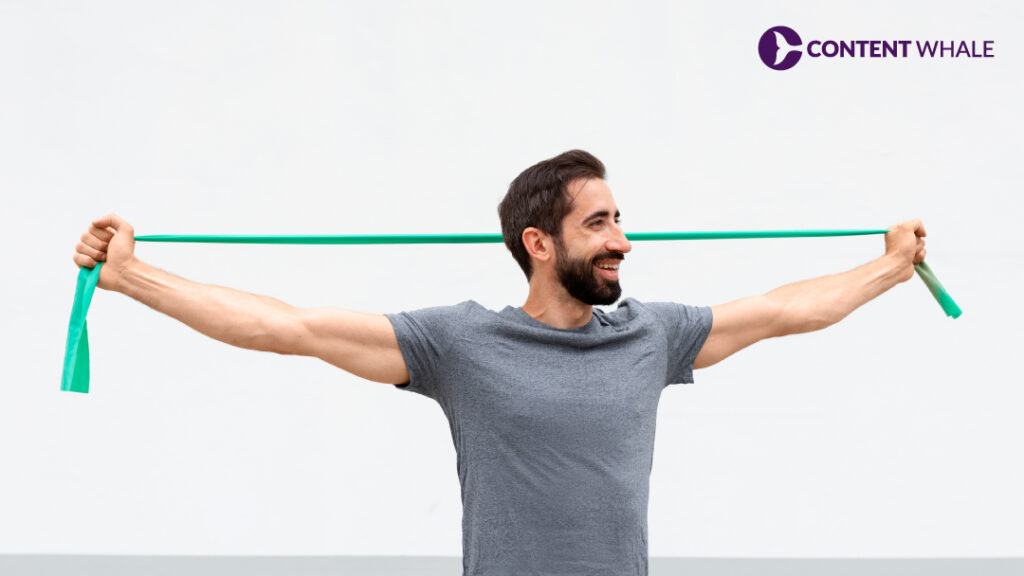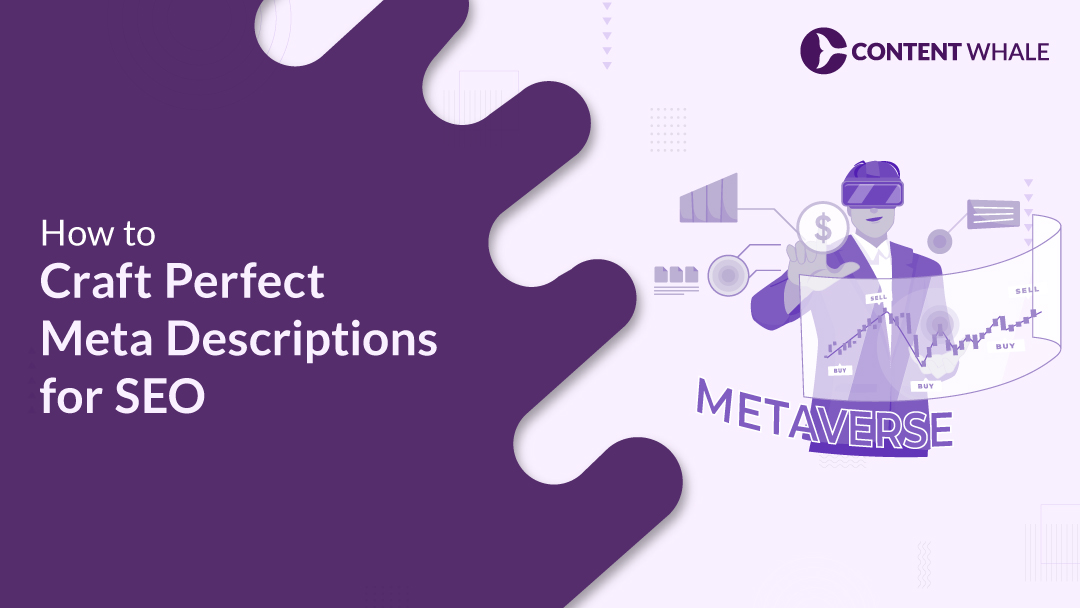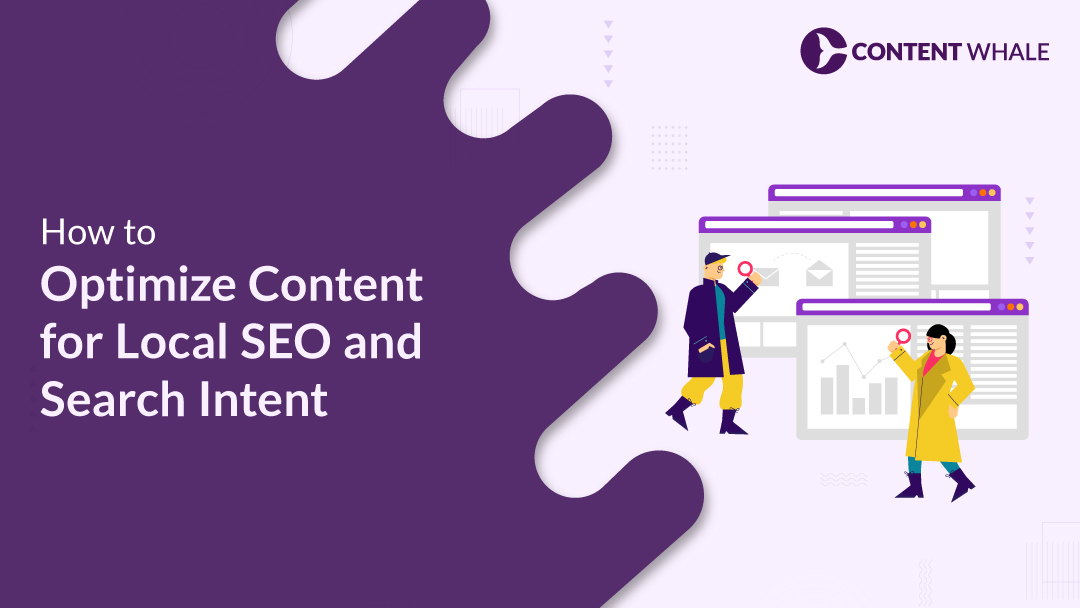Crafting meta descriptions for SEO plays a vital role in improving both your website’s visibility and click-through rates (CTR). When a potential visitor sees your link on the search engine results page (SERP), the meta description offers a brief yet informative preview of your content, helping them decide whether to click through. While meta descriptions may not directly influence search rankings, they significantly impact user engagement by addressing search intent effectively.
In this guide, you’ll learn how to write meta descriptions that not only follow meta description best practices but also ensure your page stands out. We’ll cover essential tips on finding the ideal meta description length, how to make your descriptions engaging, and provide examples of writing effective meta descriptions that increase your click-through rate.
By the end of this guide, you’ll know how to optimize your meta descriptions to boost your website’s SEO performance and user engagement.
1. What is a Meta Description?
A meta description is a brief summary of your webpage’s content, shown on the search engine results page (SERP) under the page’s title and URL. It provides users with an overview of what they can expect from your page before clicking through. Even though meta descriptions for SEO don’t directly influence search engine rankings, they significantly impact click-through rates (CTR) by helping search engines like Google display relevant SEO snippets that align with search intent.
Here’s why meta descriptions are important:
- Increased CTR: A well-written meta description can draw users in and encourage clicks, improving your page’s CTR, which in turn benefits your overall SEO performance.
- User Intent: It’s crucial to align your meta description with the user’s search intent. This helps ensure users find what they are looking for, which improves engagement and reduces bounce rates.
- Google Rewrites: Google often rewrites meta descriptions based on the content of the page or the user’s query. However, crafting an optimized description is still important to increase the likelihood of your own meta being shown.
Purpose and Placement of Meta Descriptions
- Summary: It acts as a seo snippet to summarize the webpage content for users and search engines alike.
- Visibility: It is displayed directly on the SERPs under the title, giving potential visitors a snapshot of the page’s content.
- Character Limit: The recommended meta description length ranges between 150-160 characters. If you exceed this limit, the description might get cut off, especially on mobile devices.
2. Why Meta Descriptions Matter for SEO
Meta descriptions serve as the window to your content on the search engine results page (SERP), influencing user engagement and click-through rates (CTR). While meta descriptions for SEO don’t directly impact rankings, their role in improving user behavior is critical. A compelling meta description aligns with search intent, encouraging users to click on your link rather than a competitor’s.
Here’s why they are important:
- Increased CTR: A well-crafted meta description acts as “organic ad text,” persuading users to click through to your site. By addressing the searcher’s problem and promising a solution, you can significantly raise your CTR.
- Search Intent: Understanding and matching the user’s search intent is vital. Users are more likely to click on your link when your description clearly answers their query. This improves your chances of attracting the right audience, which boosts your site’s overall performance.
- Indirect Impact on Rankings: Although meta descriptions aren’t a direct ranking factor, a higher CTR can signal to search engines that your content is relevant and valuable, which can improve your position in search results over time.
- Visibility in SERPs: Google often highlights keywords in your meta description that match the user’s query. This visual cue makes your result stand out, further increasing the likelihood of a click.
- Control Over Snippets: While Google may sometimes rewrite your meta description based on the content of the page or the query, having an optimized, unique meta description increases the chances that your original text will appear in search results.
3. Ideal Length for a Meta Description

Keeping your meta description within the optimal length is key to ensuring that it displays correctly on search results pages. Here’s how to structure it effectively:
Target Length
- 150-160 characters is the recommended range. This length helps prevent truncation, especially on mobile devices, where space is limited.
Why Stick to the Limit?
- Visibility: Going beyond 160 characters increases the chance of your meta description being cut off. This reduces the impact of your message.
- Informative: Shorter descriptions (below 100 characters) may not provide enough context to draw users in, potentially lowering your click-through rate (CTR).
Pixel-Based Display
- Search engines like Google calculate meta descriptions based on pixel width, not character count. Keeping your descriptions concise and to the point will help ensure they display properly across devices.
Key Tips for Writing:
- Incorporate Primary Keywords: Including meta descriptions for SEO naturally within the limit boosts your relevance to search engines.
- Provide Value: Focus on a clear, compelling summary that matches user intent. This ensures higher engagement and CTR.
- Be Actionable: Use phrases like “Learn more” or “Discover” to encourage users to click.
4. Best Practices for Crafting SEO-Optimized Meta Descriptions
Writing effective meta descriptions for SEO requires a blend of strategic keyword placement, engaging language, and clear value propositions. Here’s a guide to mastering meta descriptions that boost click-through rates and optimize your SEO:
a) Include Primary Keywords Naturally
Your meta description should incorporate primary keywords like “meta descriptions for SEO” naturally. However, avoid stuffing keywords; instead, make them feel like a natural part of your summary. Search engines like Google may bold these keywords in the search results, drawing attention to your snippet and making it stand out.
b) Make It Actionable
Use action-oriented language to encourage clicks. Phrases like “Learn more,” “Get started today,” or “Discover how” create a sense of urgency and guide users toward the next step. A call to action (CTA) in your description can significantly boost engagement.
c) Write for Humans First
While SEO is important, your meta description should primarily speak to the user. Create a description that clearly communicates the value of your page in a concise and compelling way. The goal is to offer a clear summary that entices people to click through to your content.
d) Provide a Clear Value Proposition
Your meta description should tell users exactly what they’ll gain from visiting your page. Whether it’s solving a problem, answering a question, or providing valuable insights, ensure that the benefits are clear. Highlight what makes your page unique or more valuable than others on the same topic.
e) Create Unique Meta Descriptions for Each Page
Avoid duplication. Each page on your website should have its own unique meta description. Duplicating descriptions across multiple pages not only confuses users but can also hurt your SEO.
| # | Best Practice | Description | Benefits |
| 1 | Include Primary Keywords | Naturally incorporate primary keywords relevant to the content to improve search visibility. | Increases relevance and improves SERP ranking. |
| 2 | Keep It Concise | Aim for a length of 150-160 characters to prevent truncation in search results. | Ensures full visibility and encourages clicks. |
| 3 | Write Unique Descriptions | Ensure each page has a unique meta description to avoid duplication and enhance relevance. | Enhances user experience and reduces confusion. |
| 4 | Use Compelling Language | Write engaging descriptions that function like a mini-advertisement, enticing users to click. | Increases CTR and engagement. |
| 5 | Include a Call to Action | Use action-oriented phrases like “Learn more,” “Get started,” or “Shop now” to prompt user action. | Drives user engagement and encourages clicks. |
| 6 | Match Content with Description | Ensure the meta description accurately reflects the content of the page to meet user expectations. | Reduces bounce rates and improves user satisfaction. |
| 7 | Avoid Keyword Stuffing | Use keywords judiciously; overloading can appear spammy and reduce engagement. | Maintains readability and enhances credibility. |
| 8 | Use Active Voice | Write in an active voice to create more dynamic and engaging descriptions. | Increases clarity and encourages action. |
| 9 | Monitor and Optimize | Regularly review performance metrics to refine and improve meta descriptions based on user engagement. | Adapts to changing user preferences and trends. |
| 10 | Leverage Emotional Appeal | Use emotionally charged language to create a connection with users and enhance engagement. | Increases user interest and drives higher CTR. |
5. Examples of Effective Meta Descriptions
Crafting effective meta descriptions that captivate users and encourage clicks requires strategic use of keywords, clear communication, and sometimes a little creativity. Below are three strong examples of how to write meta descriptions for SEO across different types of web pages:
a) Blog Post Meta Description (e.g., “How to Start a Blog”)
“Discover the essential steps to start your own blog today. Learn how to set up, grow, and monetize your blog quickly and easily.”
Why It Works: This description includes a clear call-to-action (“Discover”), addresses the user’s problem (wanting to start a blog), and contains relevant keywords such as “start a blog” and “monetize” while remaining within the optimal meta description length.
b) Product Page Meta Description (e.g., Running Shoes)
“Shop the latest running shoes with free shipping and returns. Find the perfect pair to boost your performance and comfort.”
Why It Works: This SEO snippet is concise, action-oriented, and includes key selling points like “free shipping” and “boost your performance.” The use of keywords such as “running shoes” helps ensure relevance to search queries.
c) Service Page Meta Description (e.g., SEO Consulting Services)
“Grow your business with expert SEO consulting services. Get actionable insights and strategies to improve your website’s rankings.”
Why It Works: This example uses a direct call-to-action (“Grow your business”), highlights the benefit (improving website rankings), and incorporates on-page SEO tips such as using the service keyword naturally within the description.
6. Common Mistakes to Avoid in Meta Descriptions

Crafting an effective meta description for SEO requires attention to detail, and avoiding common mistakes is crucial to optimizing your click-through rates (CTR) and user engagement. Here are some pitfalls to watch out for:
a) Keyword Stuffing
Overloading your meta descriptions with keywords can make them look spammy and unprofessional. Instead of cramming keywords, focus on integrating them naturally into a concise, readable sentence that provides value to the user.
b) Vague Descriptions
Descriptions that are too generic or fail to address the content of the page can cause users to skip over your link. Ensure that your meta description clearly explains the benefits or the content of the page, which will attract more clicks and improve engagement.
c) Duplicate Meta Descriptions
Using the same meta description across multiple pages dilutes the effectiveness of your SEO strategy. Each page should have a unique, tailored description to ensure relevance and avoid confusing search engines, which may penalize duplicate content.
d) Ignoring Mobile Optimization
With mobile traffic making up a large percentage of web usage, your meta descriptions should be short, punchy, and mobile-friendly. Descriptions that get truncated on mobile devices can lead to missed opportunities.
e) Misleading Descriptions
Ensure that the meta description aligns with the actual content on the page. Misleading users by over-promising or inaccurately describing your page content leads to higher bounce rates, which negatively impacts your SEO performance.
7. Tools to Help You Write Perfect Meta Descriptions
Writing compelling and SEO-friendly meta descriptions can be challenging, but there are several tools available that make the process faster and more effective. These tools help generate optimized descriptions that can boost your click-through rate (CTR) while ensuring your content remains engaging.
a) AIOSEO
AIOSEO is one of the most comprehensive tools for creating meta descriptions for SEO. It offers a user-friendly interface, where you can create, edit, and optimize descriptions while integrating SEO best practices. AIOSEO also allows you to monitor how your meta descriptions perform across different pages.
b) Frase
Frase is ideal for generating meta descriptions that are both relevant and optimized. It uses natural language processing to create suggestions based on your content’s title and target keywords. This tool is excellent for those managing large-scale content production, as it allows the generation of multiple descriptions quickly.
c) Rytr
Rytr is an AI-powered writing assistant known for generating concise and engaging meta descriptions. It allows you to specify the tone and customize the descriptions based on your brand’s voice, making it highly versatile for different types of websites.
d) Copy.ai
Copy.ai offers a free meta description generator that creates up to 12 unique suggestions per input. It’s perfect for experimenting with different tones and styles to see what resonates best with your audience.
e) Jasper
Jasper is another robust AI tool known for its seamless integration with Surfer SEO, allowing users to create keyword-optimized descriptions that improve SEO rankings.
8. Measuring the Effectiveness of Meta Descriptions
To understand how well your meta descriptions are performing, tracking a few key metrics is essential. These indicators provide insights into how your descriptions impact user engagement and SEO success.
a) Click-Through Rate (CTR)
CTR is one of the most critical metrics for evaluating the effectiveness of your meta descriptions for SEO. It shows the percentage of users who clicked your link after seeing it in the search results. A compelling meta description with relevant keywords can increase CTR, signaling to search engines that your content is relevant and valuable.
b) Organic Traffic
By monitoring organic traffic, you can measure how many visitors come to your website through search engines. Higher organic traffic often indicates that your meta descriptions are attracting users and matching their search intent effectively.
c) A/B Testing
Conducting A/B testing allows you to compare different versions of your meta descriptions to see which ones drive more clicks and engagement. Testing different lengths, CTAs, and keyword usage can help fine-tune your descriptions for better performance.
d) Bounce Rate
A high bounce rate suggests that users are not finding what they expected after clicking on your link. If this happens, it may indicate that your meta description misrepresented the content, leading users to leave quickly. Ensuring alignment between the description and the page content helps lower the bounce rate.
Conclusion

Meta descriptions are a critical component of SEO, serving as the bridge between your content and potential visitors. While they don’t directly influence rankings, well-crafted meta descriptions for SEO can significantly improve your click-through rate (CTR), making them an essential part of your on-page optimization strategy. Ensuring each page has a unique, relevant description that includes primary keywords will help attract the right audience and match search intent effectively.
To get the most out of your meta descriptions, focus on clear, compelling language that speaks directly to users while avoiding pitfalls like keyword stuffing or vague descriptions. Regularly reviewing and updating your meta descriptions can keep them aligned with evolving search algorithms and user behavior, leading to better results over time. Remember, these concise snippets are often the first impression of your content—make them count.
This blog is crafted by Content Whale, your trusted partner for high-impact, SEO-optimized content that delivers measurable results. If you’re looking to elevate your brand, boost your rankings, and outpace the competition, we’re here to help. Contact us today, and let’s create content that drives success and takes your business to the next level.
FAQs
1. How do meta descriptions affect SEO rankings?
While meta descriptions themselves do not directly impact search engine rankings, they play a significant role in influencing click-through rates (CTR). A compelling meta description can attract more clicks, signaling to search engines that your content is valuable, which may indirectly boost your rankings over time.
2. What is the optimal length for a meta description?
The recommended length for a meta description is between 150-160 characters. This range helps prevent truncation in search results, ensuring that users see the complete description when they search.
3. Can I use the same meta description for multiple pages?
No, each page should have a unique meta description. Using the same description across different pages can lead to duplicate content issues, making it difficult for search engines to distinguish between pages.
4. How often should I update my meta descriptions?
Regularly review and update your meta descriptions based on performance metrics such as CTR and user engagement. This practice helps ensure that your descriptions remain relevant and effective as user behavior and search algorithms evolve.
5. Do meta descriptions need to include keywords?
Yes, incorporating relevant keywords in your meta description is important for improving visibility. However, it’s essential to use them naturally and avoid keyword stuffing, which can negatively impact user engagement and search rankings.




